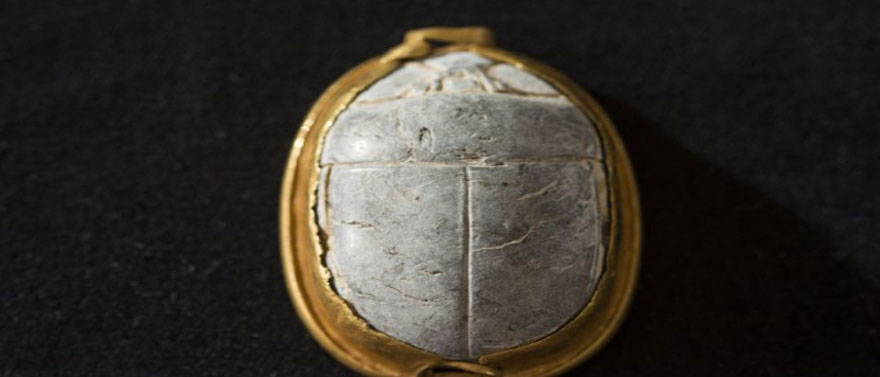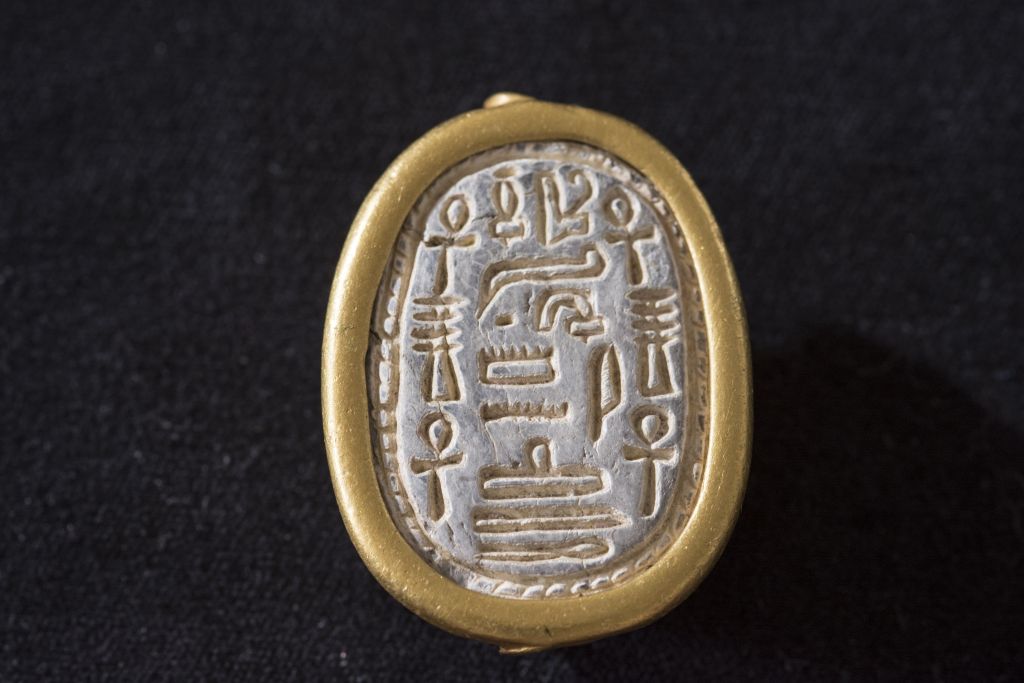Egyptian artifact, exposed after heavy rains last winter, believed to have belonged to very senior figure in Thirteenth Pharaonic dynasty in 18th century BCE
 A 3,700-year-old scarab seal found by a birdwatcher at Tel Dor, in northern Israel, dated to the 13th Dynasty. (Tel Dor Excavations, courtesy)
A 3,700-year-old scarab seal found by a birdwatcher at Tel Dor, in northern Israel, dated to the 13th Dynasty. (Tel Dor Excavations, courtesy)Haifa University announced on Sunday the discovery of a rare 3,700-year-old scarab seal found at Tel Dor, an important ancient port on the coast south of Haifa.
The amulet was found by a birdwatcher, who gave it to university archaeologists on site. The object was exposed after heavy rains last winter.
The seal is believed to have belonged to an Egyptian official of the Thirteenth Pharaonic dynasty dating as far back as the 18th century BCE.
His name, which appears on the amulet, has not yet been deciphered, but his position “who is over the treasury” in hieroglyphics are clear, according to the university.

“The scarab belonged to a very senior figure in the kingdom, probably the viceroy responsible for the royal treasury,” Ayelet Gilboa of the University of Haifa, co-head of excavations at Tel Dor, said in a statement.
“The role of the seal’s owner was similar to that of Joseph in Pharaoh’s kingdom after he interpreted Pharaoh’s dreams,’ she said.
Tel Dor was a key port city for thousands of years, according to Haifa University, until the Romans built Caesaria.
Excavators suggest two possible theories for how the scarab might have reached Tel Dor. The first has the viceroy or a representative visiting Tel Dor. The second theory suggests the scarab arrived at a much later time, perhaps when there was a demand for Egyptian antiques during the Roman period.
“Since the scarab had rolled off the mound and was not found in its archaeological context, we will probably never really know when and how it got here and where it has been,” Gilboa said, as quoted in Ynet.
A university spokesperson said the item was found several months ago, but was only cleaned up and cataloged in time for Passover.
Via The Israel Times



